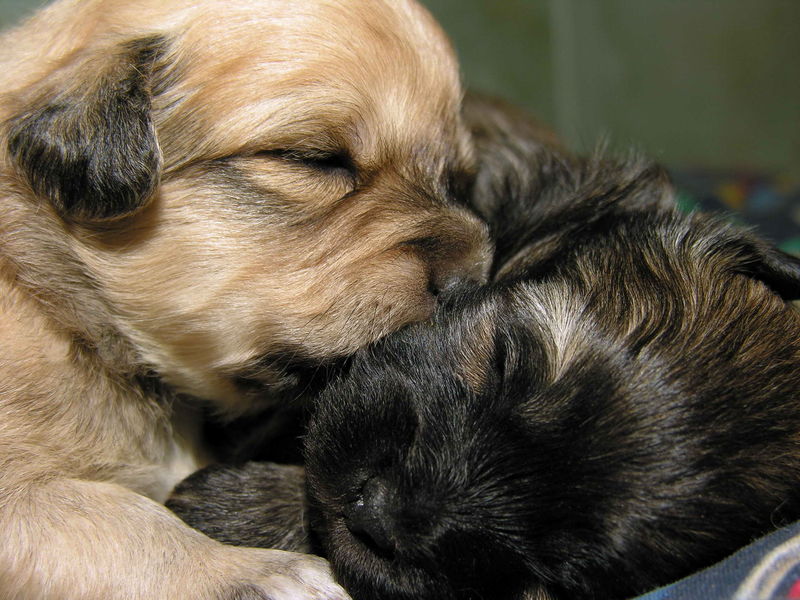Child's Play
Karla Schultz
Ontogeny
Development of Play in a Puppy
Developmental Stages of the Domestic Dog
The development of play behavior in pups is highly constrained by the physiological and mental development of the animal. There are five general lifestages for the domesticated dog: the neonatal stage, the transitional stage, the socialization period, the juvenile period, and the adult period. As described in the chart below, each stage contains a specific set of developmental advancements and social interactions. [5]
Social behavior is present in pups from the day of birth, as dogs are born in litters. Because they are poor at regulating their body temperatures, pups huddle together when sleeping. This initiates the social contact that will become social interaction when their bodies are physically capable for it. Before pups reach the physical stage of locomotion, they will engage in wrestling play; thereafter, the amount of running and chasing play inceases significantly [2].
Not surprisingly, the majority of social behaviors proliferate during the socialization period. This is the developmental period in which the physical maturation of the pup allows it to interact with its littermates. Because its sensory system is fully operative, it has a window into its surroundings; with a developed spinal cord, the sensory information can be processed in its brain. As discussed by Scott, the start of the socialization period to about 6-7 weeks is a period of development during which pup-to-pup and pup-to-mother social interactions are necessary for proper development; it is often called the "critical period" for socialization. If dogs are not allowed sufficient social interaction during this period, they will show highly increased fearfulness to humans and new objects, as shown by deprivation studies. [6]
Developmental Stage |
Ages |
General Development |
Social Interactions |
| Neonatal Stage | 0-13d |
-rooting reflex present
-forelimbs support weight (6-10d) -eyes and ears open (10-14d) -walking (11-15d) |
-nursing -huddling for body heat |
| Transitional Stage | 13-19d | -begins with opening of eyes and ears |
-patterns of adult social behavior appear |
| Socialization Period | 19d-app.12w | -maturation and mylenation of spinal cord |
-high willingness to approach novel objects -investigative behavior -play nipping (4w) -social pack behavior develops -social play: barking, chasing, mounting, biting -attachment developed to own species and humans |
| Juvenile Period | app.12w-6m | -final stages of physical growth -rate of learning slows (4m) |
-increased social avoidance (fewer social bonds formed) |
| Adult | app.6m | -sexual maturation -fully mature at app 2y |
-social maturation reached (18m) |
